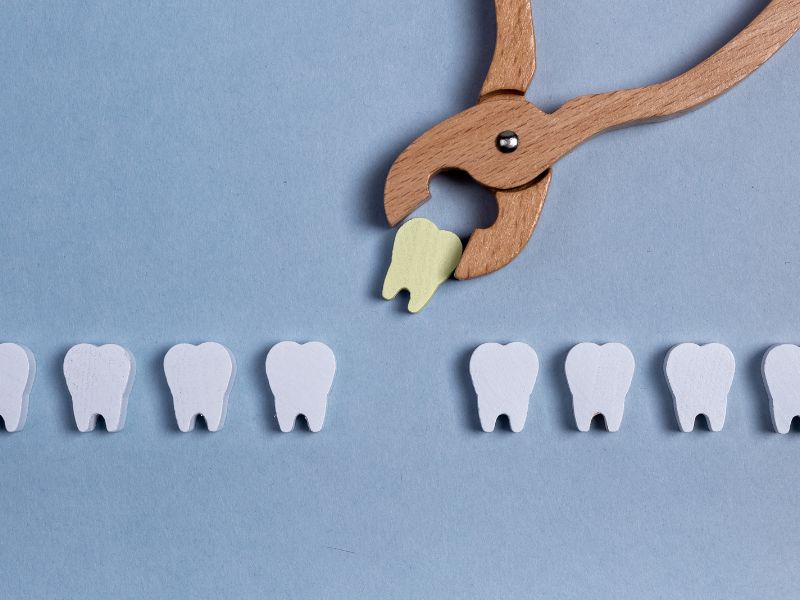Fine Dentistry Downtown Orlando: Your Trusted Choice for Nearby Tooth Extractions

Fine Dentistry Downtown Orlando: Your Trusted Choice for Nearby Tooth Extractions
No one wants to lose a tooth. But sometimes, it's the best thing to do for your long-term oral health. A tooth that is badly decayed, cracked beyond repair, or loose because of gum disease can do more harm than good. It could hurt, get infected, or even harm nearby teeth. In situations like this, removing the tooth helps keep the rest of the mouth safe.
This isn't about quitting. It's about choosing the most stable and sensible way to move forward. And with the tools and methods we have now, extractions are much more predictable and comfortable than most people think.
Why You Sometimes Need to Get Teeth Removed
There are a few reasons why a dentist might suggest pulling a tooth. In many cases, it's because the tooth has deep decay, meaning cavities have reached the center of the tooth and caused a severe infection. Root canal treatment can help sometimes, but if the damage is too bad, it's safer to take the tooth out.
Another major reason is gum disease. The bone around a tooth can weaken to the point where it can't hold the tooth in place. Other issues include cracks, broken roots, or teeth that are stuck under the gums and pushing on others. Sometimes, dentists also recommend removing teeth before orthodontic treatment or other dental work.
The most important thing is to look at the big picture — what's happening now, what could happen later, and what options make the most sense for the patient.
What the Procedure Really Looks Like
It's normal to feel nervous about having a tooth pulled. But with a well-trained team and modern tools, the process is usually smooth and quick. Local numbing agents are used to make the area completely comfortable, and sedation may also be an option for patients who are very anxious.
- Simple Extractions: These involve teeth that are visible in the mouth and are usually straightforward.
- Surgical Extractions: These are needed for teeth that are broken or haven’t grown in yet. In these cases, the dentist might lift the gum slightly or divide the tooth into smaller pieces for safe removal.
Advanced imaging helps plan everything ahead of time, making the procedure more accurate and predictable. That’s especially important when working near nerves, sinuses, or complex root shapes.
What Comes Next Matters Just as Much
Taking out the tooth is only part of the story. What happens next is crucial for long-term success. Some offices, especially those focused on comprehensive care, perform socket preservation during the same visit. This involves placing bone-preserving material in the empty space to maintain strength and prepare for future restorations such as dental implants or bridges.
If the space is left untreated, nearby teeth can shift, the bite may change, and bone loss can occur. That’s why planning for tooth replacement in advance is essential.
Things to Consider Before Moving Forward
Not all cases are the same. Certain medical conditions — such as blood disorders, low bone density, or medications that slow healing — require extra planning. Smokers also tend to heal more slowly and have a higher risk of complications.
It’s important to remember that removing a tooth doesn’t just solve a problem; it changes how your mouth functions. Teeth beside the gap can drift, and opposing teeth may move into the empty space. So the decision isn’t only about one tooth — it’s about the health of your entire smile.
Before moving forward, make sure your dentist has reviewed all your options. It’s not about rushing; it’s about making a smart, well-informed decision.
Getting Better and Looking Ahead
After an extraction, recovery is usually simple. Some swelling or soreness may occur for a day or two, but most people return to normal activities quickly. Following aftercare instructions — such as avoiding smoking or using straws — helps prevent dry socket, a condition caused when the protective blood clot dislodges too soon.
The area begins to heal and grow new tissue over the next few weeks. If you’re planning a replacement like an implant, your dentist will schedule the next step once healing is well underway. In some cases, implant planning can even start during the same visit.
This is also a great opportunity to reset your oral health habits — keeping gums healthy, brushing and flossing consistently, and preventing future problems.
The Lesson
You might not look forward to getting a tooth pulled, but with the right plan and the right dentist, it can be an important step toward a healthier smile. Removing a damaged tooth can stop pain, prevent future issues, and prepare your mouth for long-term solutions.
Call (407) 777-2071 to learn more about your tooth extraction options and the personalized aftercare available. We’re here to help you every step of the way.
